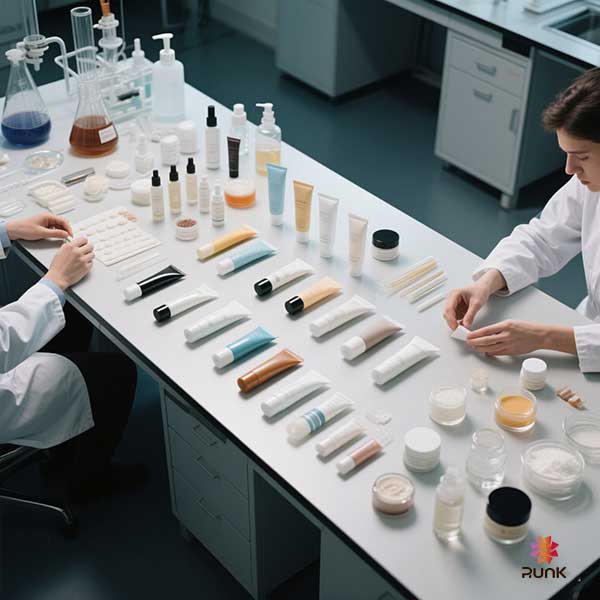L'impact du matériau du tube sur la durée de conservation des produits de soins de la peau
May 16, 2025
Lors du développement de produits de soin, le choix d'un emballage adapté ne se limite pas à l'esthétique : il influence directement la durée d'efficacité de vos formules. Les matériaux des tubes jouent un rôle essentiel dans la préservation des ingrédients, la protection contre les contaminants et le maintien de la qualité du produit. Ce guide explique l'impact des différents matériaux sur la durée de conservation, aidant ainsi les marques et les professionnels de la santé. fabricants de tubes cosmétiques vides faire des choix éclairés.1. Pourquoi le choix des matériaux est important : la science de la préservationLes formules de soins (comme les sérums, les crèmes ou les lotions) sont vulnérables à l'oxygène, à la lumière, à l'humidité et aux bactéries. Le matériau d'un tube agit comme une barrière : sa qualité et sa composition déterminent la protection du produit qu'il contient.Barrières à l'oxygène : l'oxydation peut dégrader les ingrédients actifs (par exemple, la vitamine C ou le rétinol), provoquant une décoloration ou une efficacité réduite.Contrôle de l'humidité : l'humidité peut diluer les formules à base d'eau ou favoriser la croissance microbienne.Protection contre la lumière : les rayons UV endommagent les ingrédients photosensibles comme les huiles essentielles ou les extraits de plantes.Fait essentiel : Un matériau mal choisi peut réduire la durée de conservation de 30 à 50 %, même avec une formulation parfaite.2. Comment optimiser la durée de conservation grâce au choix des matériauxa. Associer le matériau à la formuleProduits à base d'eau : des tubes en PE ou composites avec des barrières de base sont suffisants.Formules à base d'huile ou actives : Aluminium ou PE avec couches d'EVOH pour éviter l'oxydation.Formules naturelles/biologiques : Pensez à l'aluminium pour une protection maximale ou aux tubes biodégradables avec conservateurs ajoutés.b. Prioriser la technologie d'étanchéitéLa fermeture d'un tube (bouchon à clapet, bouchon à vis ou pompe airless) est aussi importante que le matériau.Pompes sans air : Réduisez l'exposition à l'air, prolongeant ainsi la durée de conservation jusqu'à 50 % des sérums.Conseils thermoscellés : évitez les fuites et la contamination pour les formules épaisses comme les beurres corporels.c. Travailler avec des fabricants expérimentésExperts en science des matériaux, les fabricants de tubes cosmétiques vides peuvent vous recommander les meilleures options en fonction des besoins de votre formule. Demandez :Test de compatibilité : assurez-vous que le matériau du tube ne réagira pas avec les ingrédients actifs.Données sur les performances de la barrière : rapports sur le taux de transmission de la vapeur d'eau (MVTR) et le taux de transmission de l'oxygène (OTR).Certifications de durabilité : si les matériaux respectueux de l'environnement sont une priorité (par exemple, contenu PCR ou compostabilité). 3. Conseils de stockage pour maximiser la durée de conservationMême le meilleur matériau a besoin d'un stockage approprié :Évitez les températures extrêmes : la chaleur ou le froid peuvent dégrader les matériaux et les formules. Conserver entre 15 et 25 °C.Gardez-le scellé : Fermez toujours hermétiquement les tubes après utilisation pour minimiser l'exposition à l'air et à l'humidité.Protection contre la lumière : Conservez les produits dans des armoires sombres ou utilisez des tubes opaques pour les formules photosensibles.Conclusion : Le matériel est important pour la qualité et la confianceLe choix du matériau de vos tubes a un impact direct sur la sécurité, l'efficacité et la satisfaction client. En adaptant les matériaux aux besoins de vos formules, en collaborant avec des fabricants de tubes cosmétiques vides expérimentés et en privilégiant les technologies barrières, vous garantissez la fraîcheur de vos produits de soin plus longtemps, instaurant ainsi une relation de confiance et de fidélité à chaque utilisation.Prêt à optimiser votre emballage ? Commencez par discuter des besoins uniques de votre formule avec un fabricant qui comprend la science des matériaux et la dynamique de la durée de conservation. Vos produits (et vos clients) vous en remercieront.
EN SAVOIR PLUS
